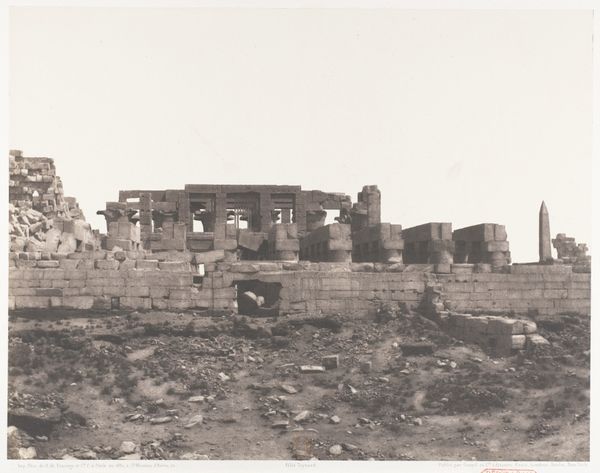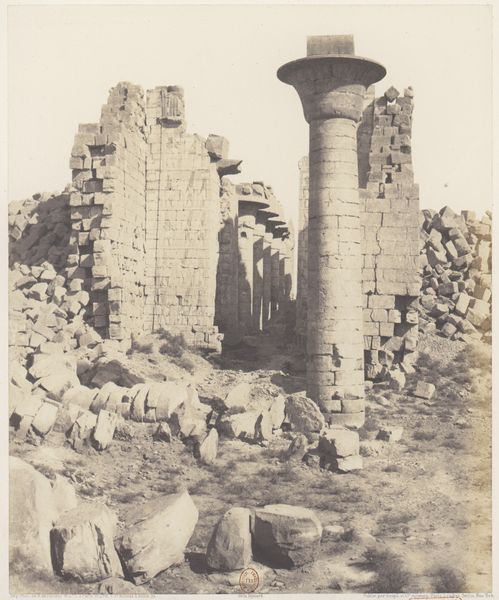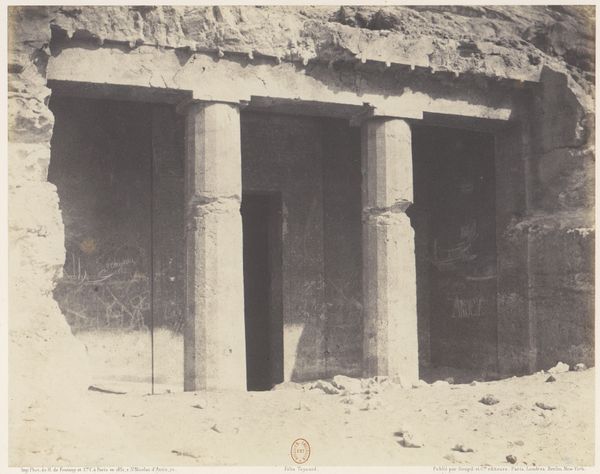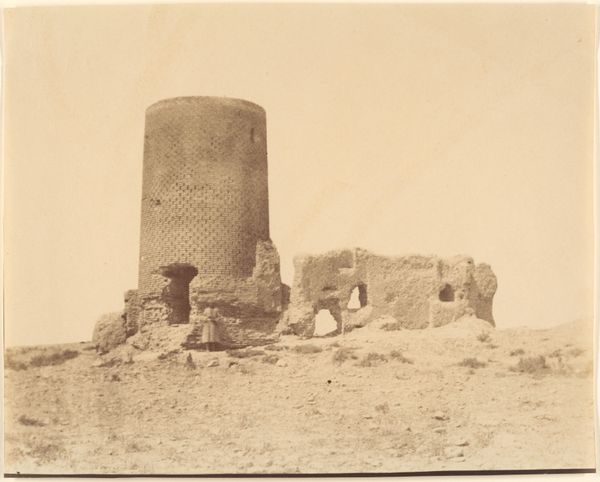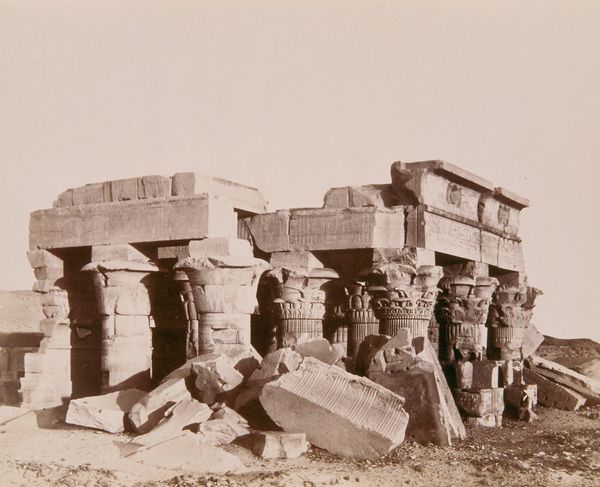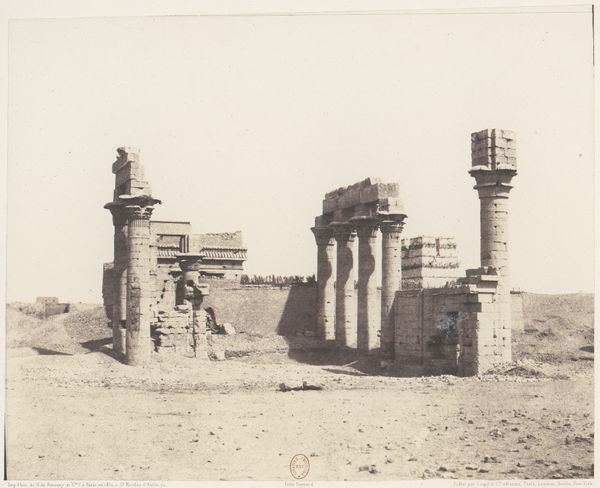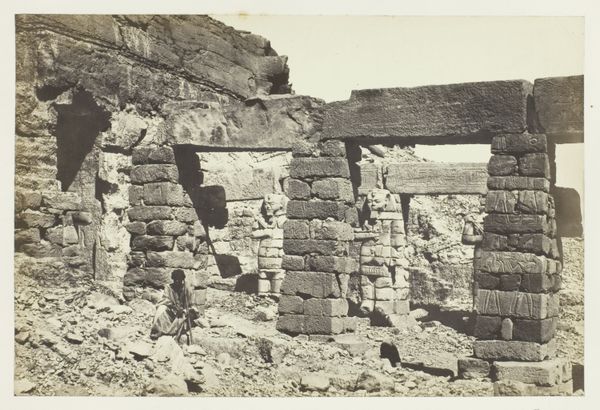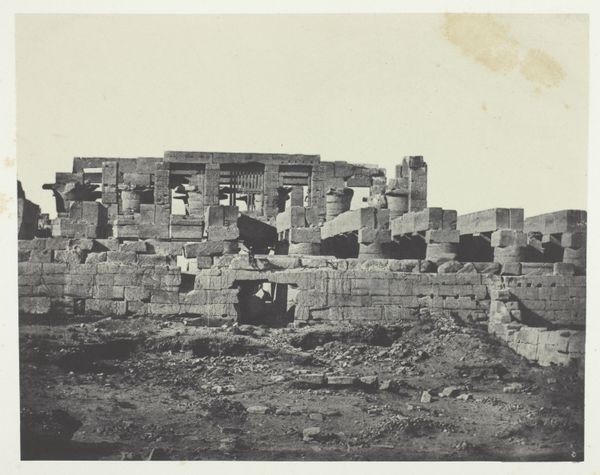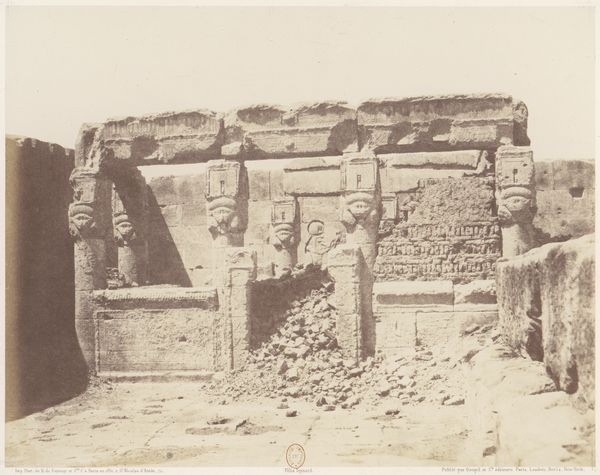
Karnak (Thèbes), Premier Pylône - Ruines de la Porte et des Colosses, Vues du Point E 1851 - 1852
0:00
0:00
daguerreotype, photography, architecture
#
landscape
#
daguerreotype
#
ancient-egyptian-art
#
form
#
photography
#
geometric
#
ancient-mediterranean
#
arch
#
architecture
Dimensions: 24.3 x 30.5 cm. (9 9/16 x 12 in.)
Copyright: Public Domain
Editor: We’re looking at “Karnak (Thèbes), Premier Pylône - Ruines de la Porte et des Colosses, Vues du Point E,” a daguerreotype made between 1851 and 1852 by Félix Teynard. It shows the ruins of a monumental gateway in Karnak, Egypt. I find the contrast between the solid, geometric architecture and the surrounding decay incredibly striking. What stands out to you? Curator: The stark contrast in tones achieved through the daguerreotype process emphasizes the formal qualities. Consider the geometric arrangement: the rectangular blocks forming the gate, the cylindrical fragments scattered around, the framing of the palm trees. It’s an interplay of regular and irregular forms that structures our visual experience. How does the materiality of the stone, as captured in this medium, contribute to the overall effect? Editor: The rough texture of the stone, immortalized in such detail, gives a real sense of the passage of time. It suggests that the forms themselves are subject to change, to entropy, like the buildings depicted within it. Curator: Precisely. We might consider how the play of light and shadow across the ruins serves not just a descriptive function, but also contributes to the photograph’s structural integrity. See how the shadows accentuate the volumes and define the spatial relationships? Teynard’s mastery lies in his ability to translate three-dimensional form into a powerful two-dimensional composition. Is there any area of the work you consider most impactful? Editor: I think the opening framed by the ruined archway – the negative space – focuses the gaze and underscores the geometry of the forms, wouldn’t you agree? Curator: Absolutely. That opening becomes a critical element, functioning almost as a frame within a frame, reinforcing the photograph's internal logic and directing our attention to the interplay of solids and voids. A masterful demonstration of form and structure. Editor: I've never thought of an architectural photograph this way! It’s usually about documenting, but it is interesting to see the arrangement of space being just as important. Curator: Indeed, the photo, in its exquisite rendering of shapes, goes beyond merely documenting to truly achieve a sophisticated expression.
Comments
No comments
Be the first to comment and join the conversation on the ultimate creative platform.

